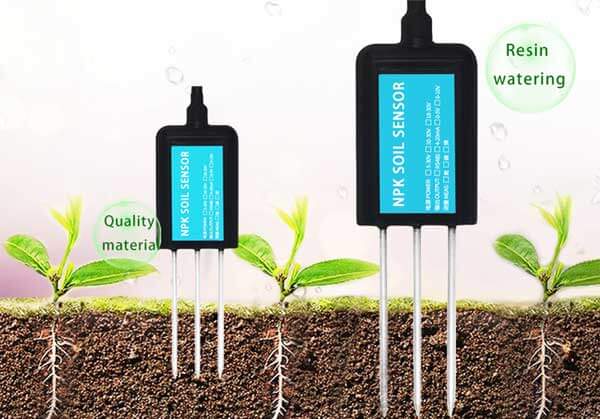Agriculture, the backbone of our society, has always been heavily dependent on human knowledge and experience. However, with the advancement of technology, we are now witnessing a revolution in the agricultural sector through data-driven farming. In particular, soil sensor analysis has emerged as a game-changer in optimizing agricultural practices and revolutionizing the way we approach farming. This article explores the significance of data-driven farming, focusing on the role of soil sensor analysis in improving agricultural productivity, resource management, and sustainability.

Understanding Data-Driven Farming
Data-driven farming refers to the adoption of technologies that collect and analyze data to optimize agricultural practices. These technologies rely on sensors placed in various parts of the farm, including soil sensors that monitor soil conditions. Soil sensor analysis involves collecting data on parameters such as moisture levels, temperature, pH, nutrient content, and organic matter. This data is then processed and analyzed to gain valuable insights into the health and fertility of the soil, enabling farmers to make informed decisions about their farming practices.
Benefits of Data-Driven Farming
Optimal Resource Management: One of the key advantages of data-driven farming is the ability to optimize resource management. Soil sensors provide real-time data on soil moisture levels, enabling farmers to understand the water needs of their crops better. By using this data, farmers can implement precision irrigation techniques, ensuring that water is used efficiently and reducing water wastage. Additionally, soil sensor analysis allows for precise and targeted fertilizer application based on nutrient levels in the soil. This not only minimizes nutrient losses but also reduces the environmental impact of excessive fertilizer use.
Increased Crop Productivity: Data-driven farming, facilitated by soil sensor analysis, can significantly enhance crop productivity. By monitoring soil conditions, farmers can identify any potential issues such as nutrient deficiencies, pH imbalances, or disease susceptibility. With this information, farmers can take timely corrective measures and adjust their farming practices accordingly. For example, if soil pH levels are too high or too low, farmers can apply appropriate amendments to create the ideal growing conditions for their crops. This proactive approach promotes healthy crop growth, minimizes yield losses, and maximizes overall productivity.
Sustainability and Environmental Impact: Soil sensor analysis plays a vital role in promoting sustainable farming practices and minimizing environmental impact. By accurately monitoring soil moisture levels, farmers can avoid over-irrigation, which can lead to waterlogging and nutrient leaching. Additionally, by optimizing fertilizer application through precise nutrient monitoring, farmers can reduce nutrient runoff into water bodies, preventing water pollution. Furthermore, soil sensor analysis enables farmers to assess soil health and implement measures to improve soil structure, fertility, and microbial activity. Healthy soils not only support robust crop growth but also contribute to carbon sequestration, mitigating climate change.
Applications of Soil Sensor Analysis
Precision Agriculture: Soil sensor analysis is an integral part of precision agriculture, a farming approach that leverages technology for site-specific management. By collecting data from multiple soil sensors across a field, farmers can identify spatial variability in soil properties. This information can then be used to create prescription maps for variable rate irrigation, fertilization, and seeding. By applying resources precisely where they are needed, farmers can optimize productivity and minimize waste, leading to more sustainable and efficient farming practices.
Decision Support Systems: Soil sensor data, combined with weather information and crop models, can be integrated into decision support systems (DSS). These DSS platforms use advanced analytics algorithms to interpret the data and generate recommendations for farmers. For example, based on real-time soil moisture data, a DSS can provide irrigation scheduling recommendations, ensuring that crops receive optimal water levels. Similarly, nutrient management recommendations can be generated based on soil nutrient levels, maximizing nutrient uptake by crops. These systems empower farmers to make informed decisions using data-driven insights, enhancing productivity and profitability.
Collaboration and Knowledge Sharing: Soil sensor analysis can also promote collaboration and knowledge sharing among farmers. By collecting data from multiple farms, organizations can create databases or platforms where farmers can share their soil sensor data and gain insights from others in the community. This collaborative approach fosters learning and allows farmers to benefit from collective knowledge, ultimately leading to improved farming practices and better results.
Challenges and Future Prospects
While soil sensor analysis has immense potential in revolutionizing agriculture, there are several challenges that need to be addressed. These include the high cost of sensors and data analysis tools, compatibility issues with existing farming systems, and the need for standardized data interpretation methods. Additionally, ensuring data privacy and security is crucial to maintaining farmers’ trust in adopting these technologies.
Looking ahead, the future prospects of soil sensor analysis in agriculture are promising. Advancements in sensor technology, such as miniaturization and reduced costs, will likely drive wider adoption of soil sensors. Similarly, advancements in data analytics and machine learning techniques will enhance the interpretation of sensor data, enabling more accurate and personalized recommendations for farmers. The integration of soil sensor analysis with other cutting-edge technologies, such as artificial intelligence and satellite imaging, holds even greater potential for optimizing agricultural practices and ensuring food security.

Conclusion
Data-driven farming, with soil sensor analysis at its core, is revolutionizing the agricultural sector. By leveraging real-time data on soil conditions, farmers can optimize resource management, maximize crop productivity, and minimize environmental impact. Soil sensor analysis enables precision irrigation and nutrient management, promotes sustainable farming practices, and facilitates site-specific management through precision agriculture. As technology continues to advance, the future of data-driven farming looks promising, with increased productivity, efficient resource utilization, and a more sustainable approach to agriculture. With ongoing innovation and collaboration, we can unlock the full potential of soil sensor analysis and ensure a brighter and more prosperous future for agriculture.
